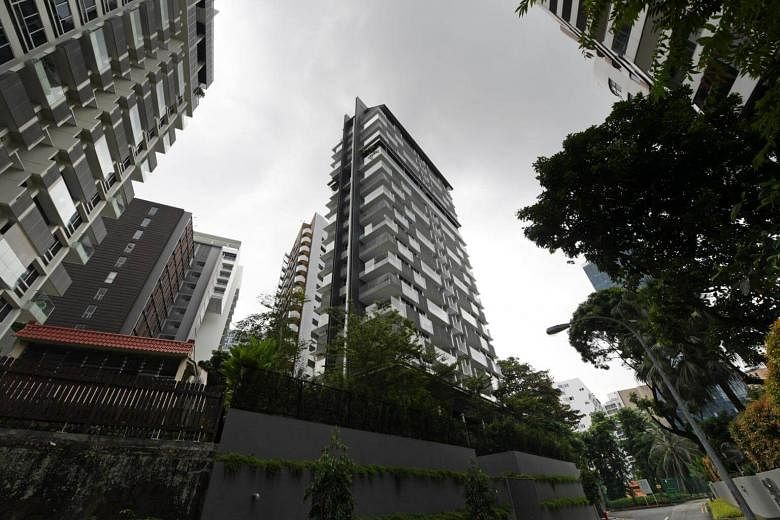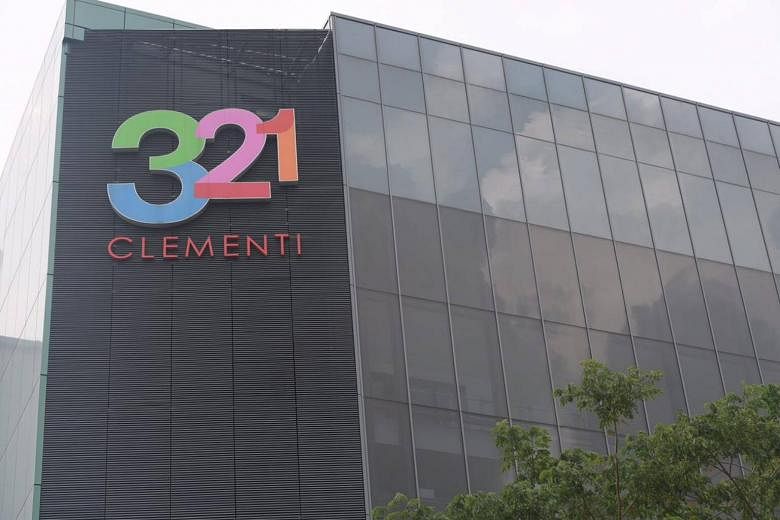SINGAPORE - A total of 36 buildings here, including an industrial complex in Toh Guan Road where a fire broke out in May resulting in one death, are using external cladding that may not adhere to safety standards in the Fire Code.
Of these, 15 are confirmed to be using combustible cladding that allow flames to spread quicker than they are supposed to.
They include the new Our Tampines Hub, parts of Singapore Polytechnic and luxury condominiums The Peak @ Cairnhill I and II.
Checks are ongoing for the rest.
Preliminary police investigations found that 41 buildings in Singapore are using composite panels from American brand Alubond, whose local sole distributor had mixed up panels of differing standards at its warehouse. This means that the buildings could be using on their external walls panels that have less stringent flame spread standards.
Of these, five have passed Singapore Civil Defence Force (SCDF) checks carried out over the past two weeks, 15 have failed while 21 are still not yet tested.
A police report has been lodged by the SCDF, according to a joint media briefing by the Ministry of Home Affairs (MHA) and SCDF on Thursday (Aug 24).
In a press statement, SCDF said that it has "assessed that all the buildings are safe for occupancy, and is working closely with building owners to rectify the improper use of composite panels on their building within two months".
SCDF said it conducted comprehensive fire safety assessments of the 40 buildings and deemed them safe for occupancy due to existing fire safety provisions, such as sprinklers, fire alarms and escape routes. It also took into consideration factors such as the proximity of the cladding to possible ignition sources as well as the proportion of external walls covered with cladding.
Said SCDF's fire safety and shelter department director Christopher Tan: "I would like to advise the public to go about their daily activities as (these) buildings are fit and safe for occupancy."
The Straits Times understands that the distributor, Chip Soon Aluminium, has ceased supplying Alubond here. It was first brought in from 2011.
The full list of buildings which are found to have failed the test, or are untested but publicly accessible, have been published on SCDF's website.
The Toh Guan fire, which occurred in May, preceded two major fires in London's Grenfell Tower in June and Dubai's Torch Tower earlier this month (Aug).
While the London fire brigade has yet to release its findings, reports attributed the spread of the Grenfell and Dubai fires to the use of combustible external cladding.
On Wednesday, ST found that the cladding panels at 30 Toh Guan Road have been removed. This was carried out some time last month, said tenants, adding that they were assured by the building management that the building is safe for occupation.
In response to queries from The Straits Times, the building owners of 30 Toh Guan Road claimed that the cladding panels were installed "in compliance with then-existing fire safey guidelines".
Said Mr Adrian Chui, chief executive officer and executive director of ESR Funds Management: "As a precautionary measure, we have decided to remove the cladding from 30 Toh Guan in consultation with SCDF to ensure that business operations could resume as soon as possible.
"We welcome any initiatives that would improve fire safety standards in Singapore."
A coroner's inquiry will take place later this year to look into the death of Madam Neo Siew Eng, 54, who worked on the fifth floor of 30 Toh Guan Road.
The case is the only one, out of 19,013 fires from January 2012 to June 2017, to involve the external facade.
Only a small number of Housing Board flats use composite panels for cladding of lift shaft exteriors. They have been assessed and found to be compliant.








